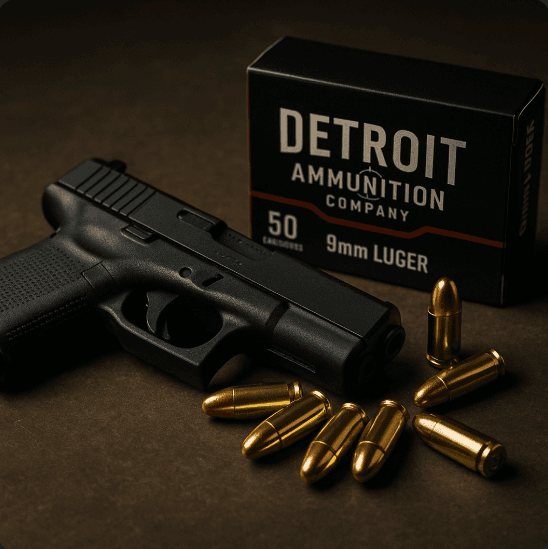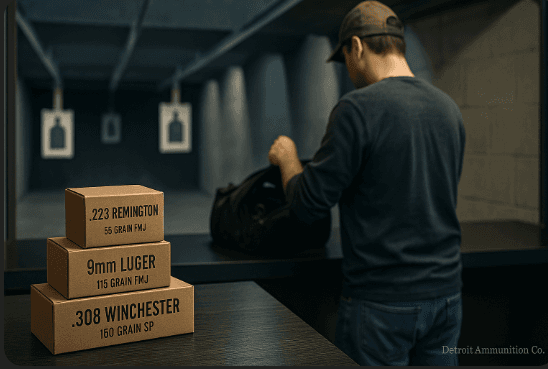Which Bullet to Use – the Complete Guide
Posted Sep 12, 2021
Many of us pay little heed to the type of bullets we use while shooting, instead just loading whatever is the cheapest we can find, take it to the range and go pew pew pew. But, if you really want to make the most out of your gun’s performance, choosing the right bullet type is essential for the purpose. Having bullet literacy can even help save your life as you will get to learn later in this guide.
What are the factors that affect a bullet’s performance and which bullet to use for which purpose? This guide will answer these questions and more so continue on reading.
Important Note: Before we continue on with the guide, it is important to remember that only those bullet cartridges with a gun should be used for which it was designed. Using any other type can risk damaging the firearm or worse, result in a serious or even fatal injury to you.
Table of Content
a. Ballistics Variables of Bullet
1.Design
2. Material
3. Weight
4. Caliber
5. Propellent
b. Which Bullet to Use?
1. Self-Defense
2. Hunting
Big Game
Small Game
3. Competition
c. Parting Note
Ballistics Variables of Bullet
Ballistics refers to the science behind the propulsion, flight, and impact effects of a projectile. In the case of bullets, there are five main factors that influence its performance when fired – its design, material, weight, caliber, and propellent. Below is provided a brief overview of each of these and how they impact a bullet’s performance.
Design
A bullet’s design primarily impacts its performance in two ways, its velocity retention, and deformation upon impact. Bullets with a sharper nose angle (Boat Tail) tend to have better velocity retention while in flight but also tend to deform the least, resulting in high chances of overpenetration.
Bullet overpenetration is something to avoid as not only does it increase the risk of not dealing enough damage to the target but, because they pass through them and continue on their trajectory, can also endanger innocent bystanders.
Meanwhile, more blunt shaped bullets (Round Nose) act the very opposite, having worse velocity retention but deform more easily upon impact.
Bullet design, of course, extends to more than just its shape. How the tip is made also greatly influences its performance. Take for example a ‘hollow-point’ bullet which feature an exaggerated opening at the tip. This facilitates the bullet to deform more easily on impact and transfer more of its energy into the target.
Material
The type of material a bullet is made of can influence its deformation upon impact. Most bullets tend to be made of lead enclosed within a copper ‘jacket’. This combination grants the bullet enough strength to retain its shape while fired but still experience deformation when hitting a target.
Aside from lead and copper, bullets can be made of other materials to increase or decrease its penetration beyond what is the standard. For instance, steel alloy bullets are used for armor-piercing because of their incredibly high penetration and very low-deformation. Meanwhile, in areas when over-penetration can be a serious concern, ‘frangible’ bullets made out of compressed copper granules are used because they shatter easily above impact.
Weight
Both the design and material of a bullet also impact its weight, which itself is a significant variable of its performance. (How to Choose the Best Bullet Weight – The Ultimate Guide) A bullet’s weight is measured in grains with 1 pound being equal to 7000 grains. Taking all other conditions to be equal, the higher the weight of the bullet, the greater will be its recoil, accuracy in flight, and knockout force.
In addition, because of a bullet’s ballistic dynamics, heavier bullets tend to shoot higher and with less muzzle velocity while lighter ones shoot lower with more muzzle velocity. This again, of course, assume all other conditions are equal.
Caliber
A bullet’s caliber is something that we are all quite familiar with. It refers to the size of the bullet, more specifically its diameter. A figure of a whole number (e.g. 9, 5.56) indicates its value in millimeter while a fraction (e.g. .45, .233) represents a value in the hundredths of an inch or thousandths of an inch.
A higher caliber generally translates to more bullet weight but, just as with a bullet’s design, it can also influence energy transfer. The greater the caliber, the greater the surface area, and the greater the contact size when the bullet hits the target.
This naturally means that larger caliber bullets are able to transfer more energy into the target upon impact and thus tend to be more lethal and pack a greater knockout force.
Larger caliber usually also translates to a larger recoil because a more powerful change is needed to propel them at speed from the barrel. This can also result in less ‘combat accuracy’, that is how little in adjustments in aiming is required after firing each individual shot.
Propellent
The type of propellant used impacts both recoil and a bullet’s muzzle velocity. ‘Hotter’ propellant charges can push the bullet out of the barrel at higher speeds but also produce harder recoil. Some guns are designed to operate with such high-powered cartridges and using them in such firearms can lead to the risk of causing damage to its internal structure.
Which Bullet to Use?
Self-Defense
The scenario here is a soft target a short distance away and you only have a few second-time window to down them before they have a chance to close in and hurt you. Naturally, in such a tense situation, for many people, managing their aim can also be quite difficult, and the chance of losing your calm high.
With these factors accounted for, the best bullet to use would be one that features decent deformation so that it neither over- or underpenetrated the target, packs enough energy to be lethal and have a sizable knockout effect but still within the limits of a manageable recoil (you’ll likely be shooting more than once). Generally, the ideal bullet would be of a:
- Hollow or soft-tip
- Copper enclosed lead
- Medium to heavy grain
- Small caliber
- Medium propellent
Bullet Example: 9mm-147gr HP/XTP
Hunting
Big Game
Big game animal usually has thick hides, are tough to kill and the hunting usually involves shooting them from a safe enough distance. For big game hunting, you would want a bullet that is able to provide lots of penetration but also deformation once it reaches the beast’s vitals. In addition, it should also be lethal enough to down the animal painlessly in one or two shots as well as retain its energy and accuracy over large distances. Since there is plenty of time afforded to adjust your aiming, there is far greater tolerance for recoil here. Generally, the ideal bullet would be of a:
- HPBT or Soft Point
- Copper enclosed lead
- Medium to heavy grain
- Medium to large caliber
- Medium to strong propellent
Bullet Example: SUBSONIC .308 WINCHESTER-168gr HPBT
Small Game
With small game, the distance tends to be a lot closer and the target extremely soft. Since you don’t wish to blow the poor animal to smithereens, a far smaller and less powerful bullet is needed. Generally, the ideal bullet would be of a:
- Hollow or soft-tip
- Copper enclosed lead
- Very light to light grain
- Small caliber
- Weak propellent
Bullet Example: SUBSONIC .223 Remington-55gr FMJ
Competition
When it comes to most competitive shooting, accuracy at range usually tends to be the most important criteria. In addition, since you will be shooting quite often, the type of bullet used shouldn’t leave behind much residue when fired. This reduces the intervals in which you need to clean and service your gun to keep it firing at optimal capacity.
While there is no need for the bullet deforming, the material it is composed of should still be soft enough to mitigate the risk of it ricocheting upon impact and potentially endangering any bystander. Generally, the ideal bullet would be of a:
- Full Metal
- Copper
- Heavy Grain*
- Strong propellent
Bullet Example: Brass Match Solid 50 BMG 650gr
*A heavier bullet on its own is not a surety of more accuracy but how it interacts with other factors. For instance, while the weight of the bullet would make it less influenced by the effects of wind, if it is fired at a slow enough velocity, the effects of gravity could be strong enough to greatly harm its accuracy at range.
Parting Note
The information contained here in this guide should be used as a rough reference for bullet performance – a starting point to discovering which bullet to use for any given situation. Ballistics is a very complex field and the only way to have a more accurate understanding of what type of bullet would work is not by reading but actually going out to the range and experimenting with different ammo types.
We hope you found the information contained in this guide to be helpful. Please do consider sharing it with others as well who may also find it a worthwhile read. Have any thoughts or opinions about the article you want to share? Feel free to do so in the comments below.


